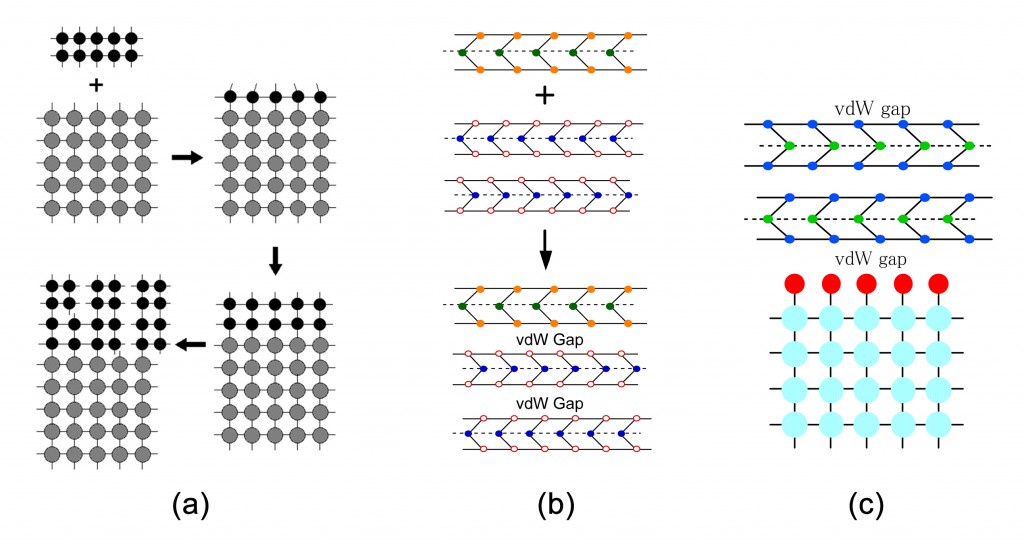About VDWE
What is “van der Waals epitaxy” ?
Written by: Keiji Ueno
(Department of Chemistry, Graduate School of Science and Engineering, Saitama University)
Recently, heterostructures with atomic-order thickness have been successfully fabricated by molecular beam epitaxy and other epitaxial growth techniques. But so far good heteroepitaxial growth was possible only for very limited combinations of materials. The restriction comes from the severe lattice matching condition to be satisfied by constituent materials. Usually there appear dangling bonds on a clean surface of a substrate as is seen in Fig. (a), and this makes it difficult to grow good heteroepitaxial films without good lattice match in the constituent materials.
On the other hand, such layered materials as graphite, mica, MoS2 or GaSe, have a lamellar structure consisting of two-dimensional unit layers. Each unit layer is formed via strong covalent or ionic type bonds, while there is no strong bond between two unit layers; they are bound together via van der Waals-type weak interaction. Then layered materials can be easily cleaved and the clean cleaved surface has a very wide and flat terrace without an active dangling bond. When the thin film growth is investigated on such an inactive surface of a layered material, only weak interaction works between the substrate and the grown material. This results in far small lattice-mismatch distortion in the grown film even if it has a different lattice constant or a crystal structure from the substrate. Consequently, single-crystalline heteroepitaxial growth of layered materials or organic molecular crystals can be achieved from the initial layer on the layered material substrate, as shown in Fig. (b). In 1984, Prof. Koma named this type of the heteroepitaxial growth “van der Waals epitaxy (VDWE)”.
Initially, VDWE was the growth of a layered material onto another layered material substrate, which has no dangling bond on its cleaved surface. Later, VDWE was extended to the heteroepitaxial growth of layered materials onto 3-dimensional crystal substrates, which have active dangling bonds on their clean surfaces. If these active dangling bonds are regularly terminated by suitable atoms, the surface will be inactive like a cleaved surface of a layered material. Then, a single-crystalline film of a layered material can be heteroepitaxially grown on such a dangling-bond-terminated surface via van der Waals-like weak force, as shown in FIg. (c). For example, layered material (NbSe2, MoSe2, GaSe, InSe, etc.) films have been grown on such dangling-bond-terminated surfaces as H-terminated Si(111), S or Se-terminated GaAs(111)A, F-terminated CaF2(111), and bilayer-GaSe terminated Si(111).
(to be continued…)
